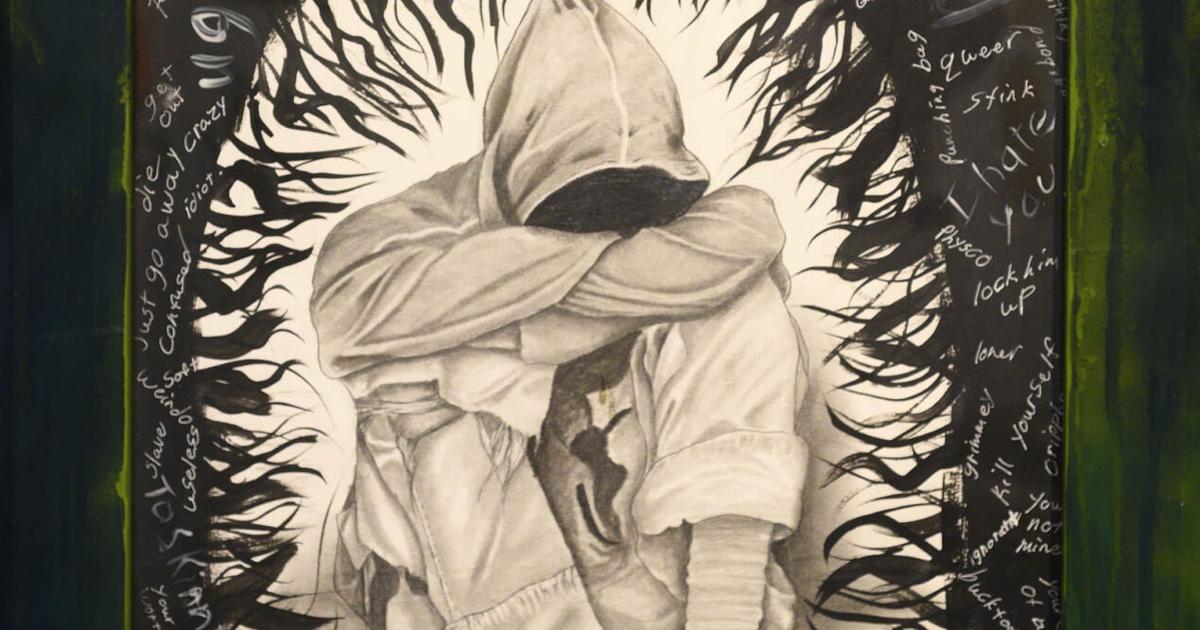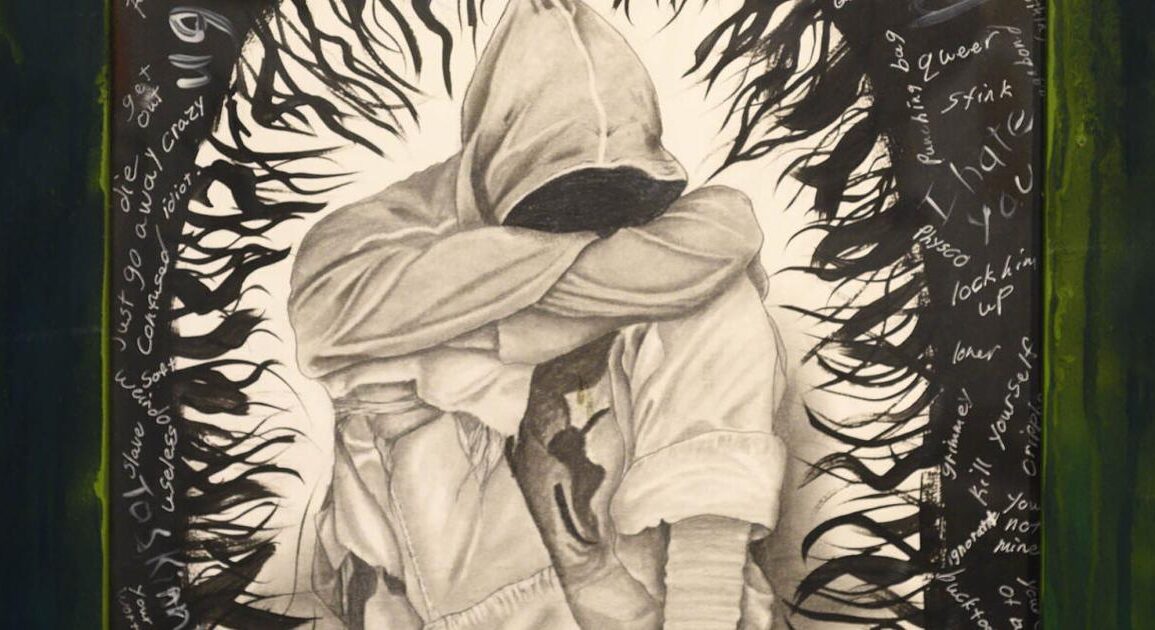
An elderly man, deep creases in his face, looks straight at the viewer. The brim of his hat shades his forehead. His expression is direct, not betraying his emotions even as one peers into his eyes. In one corner of the portrait is a second image of the man, sitting on a low stool, legs crossed, hand in lap with the same frank, but inscrutable visage. A tiny, hand tied-fishing fly is drawn beneath his collar.
“Johnny is a friend of mine, although most would not guess it,” writes the artist, who goes by the name Idle.
Idle explains that his friend John D. Smith has been in prison since 1971, has never had a write up, has never been in any trouble. He doesn’t swear, drink, do drugs or break rules. Idle lives on a different floor than Smith. He notes that prison placement is based on classification and reflects that at Mount Olive Corrections Center are countless elderly men, Smith included, who could be transferred from maximum security, but are not.
Idle’s portrait of Smith, is among the works by about 40 artists, all incarcerated in West Virginia correctional centers, in the traveling exhibition that opened at the T.W. Wood Gallery in Montpelier last week. A selection of Smith’s meticulous fishing flies is among them.
“Inside Out: Incarceration” is a product of a four-year relationship between incarcerated artists in the West Virginia Department of Corrections and Rehabilitation, former WVDCR commissioner Betsy Jividen, and Uplift WV, an advocacy group whose work includes dealing with reentry, recovery and poverty. The exhibition fills the T.W. Wood’s Nuquist and Hall Galleries.
The exhibition comes to the T.W. Wood via Goddard College. Kate Marshall, director of Uplift WV and the Mother Jones Center for Resilient Community in West Virginia is one of several people currently studying in Goddard’s Socially Engaged Arts who are involved in the exhibition and its broader community effort in her home state.
At the opening of “Inside Out” Aug. 4 at the T.W. Wood, Marshall explained that the initiative was launched to spur community conversations and collaborative creativity around issues of poverty, homelessness, mental health, incarceration, and reentry of previously incarcerated people into communities.
Recognition that one in 10 children in West Virginia has an incarcerated parent was one of the stark realities that led to “Inside Out.” West Virginia has been hit hard by the opioid crisis, homelessness and poverty.
With support and introductions facilitated by Commissioner Jividen, Marshall and Uplift WV reached out to artists in corrections to enlist their help.
“We started with questions. What do you think influenced you to becoming an incarcerated human being? What do you think the population you are being excluded from needs to know? What do you think on reentry the community needs to know about you and what do you hope they’ll discover about you?” explained Marshall.
At Mount Olive Corrections Center, with a capacity of 1,030 men, Jividen connected Marshall with Idle, who is serving a sentence of “life without mercy” and will never be released. Multi-talented, Idle works in a variety of media — finely executed drawings, bold sculptural pieces and more. A leader in the prison arts program, Idle is a mentor to others.
“What’s amazing is that this exhibition is really dual curating,” said Marshall. “We are curating on the outside, but he is the real curator on the inside, talking to artists and telling them who we are and why he trusts us, and asking them to contribute,”
This dual curating has led to a visually rich and deeply moving exhibition.
Viewers see “cell art” — art made in people’s cells, often from scavenged materials. A rose made of bread dough worked to become a kind of clay, painted with floor wax dyes with color from markers or candy, stands elegantly in a frame. Its label notes that as bread is not allowed out of the cafeteria, the removal of it is against policy and the dough would be considered contraband. An artist could be punished with a write up extending their incarceration time.
A magnificent sailing ship made of scavenged pencils, a flower made of cicada wings, a model lighthouse all attest to the resourcefulness of cell artists.
Incarcerated people in the West Virginia prisons may apply to their facility’s art department. If accepted, they work there for their prison “jobs.” Their work may not be sold on the open market but can be sold through the prison shop with earned funds going to their commissary. Artists may donate to nonprofit organizations to further their missions.
This post was originally published on this site be sure to check out more of their content.







